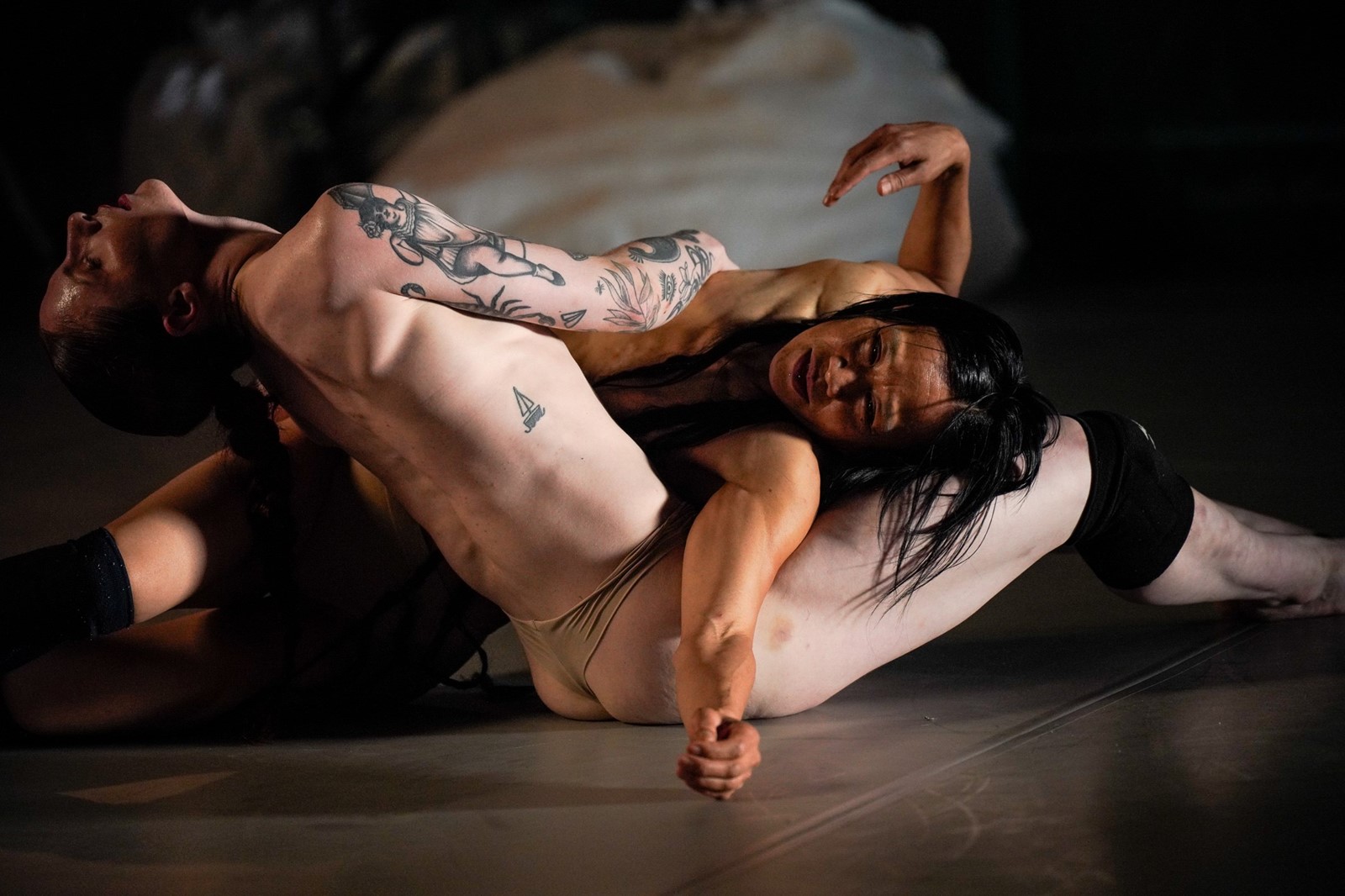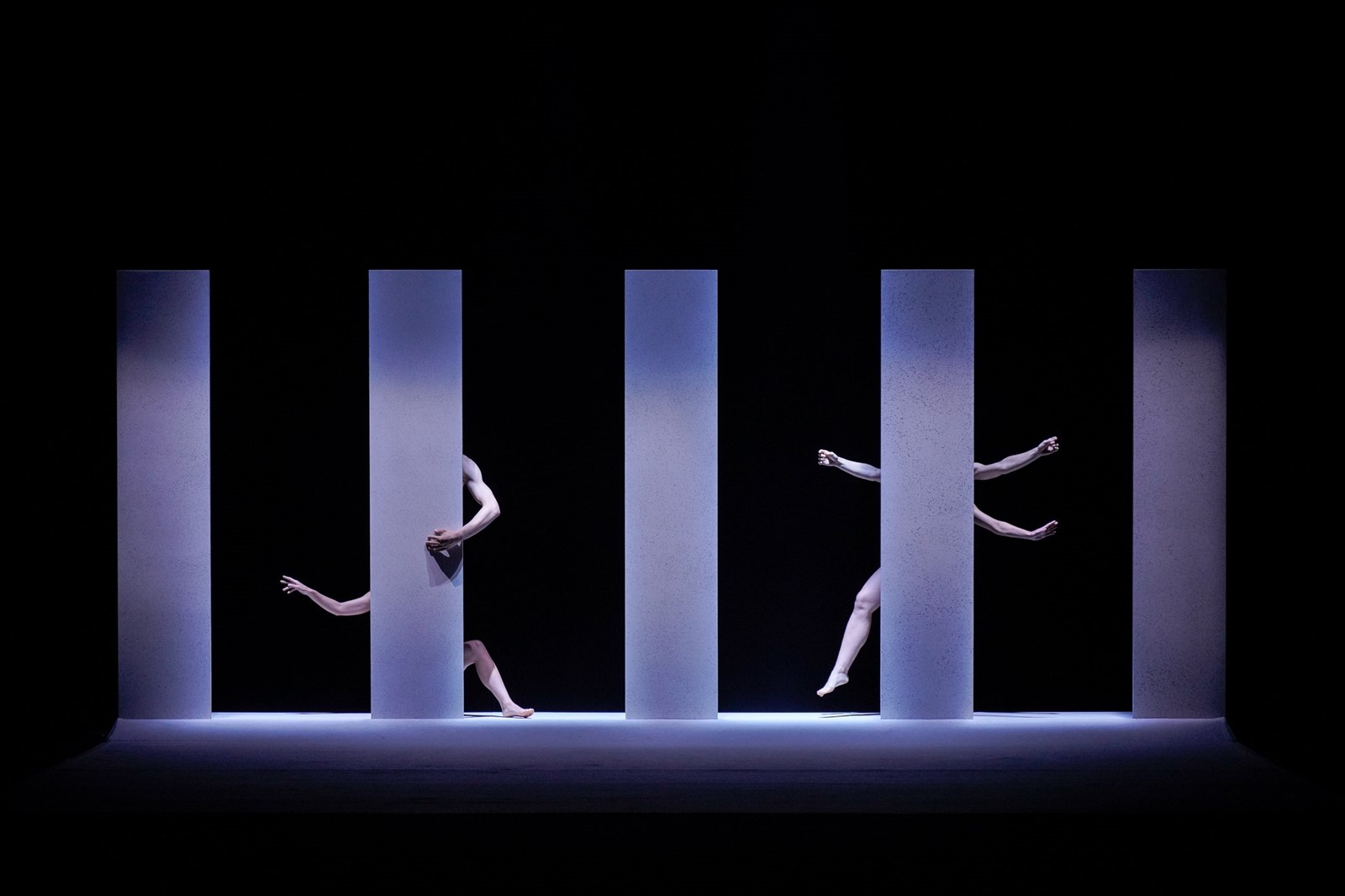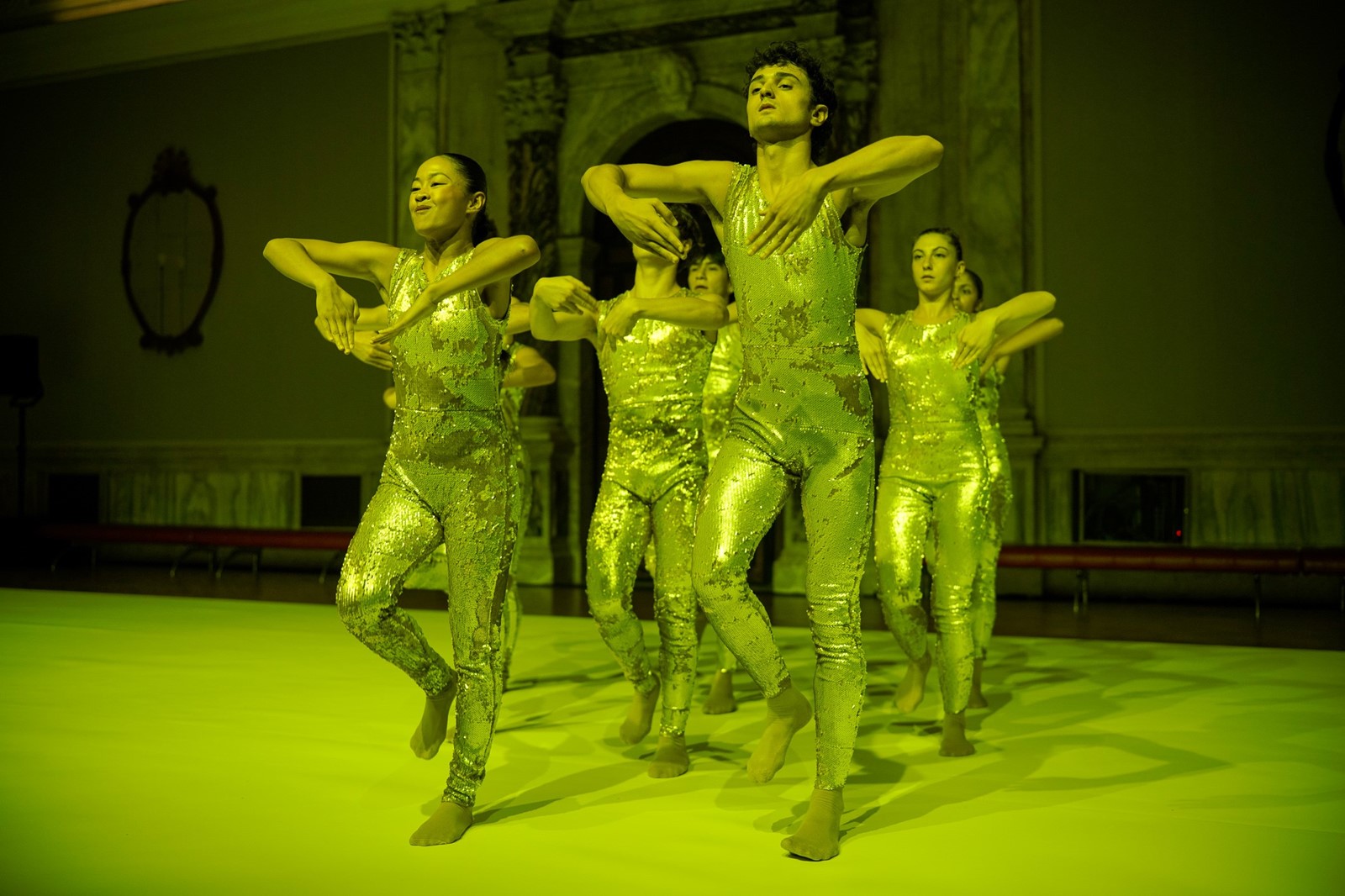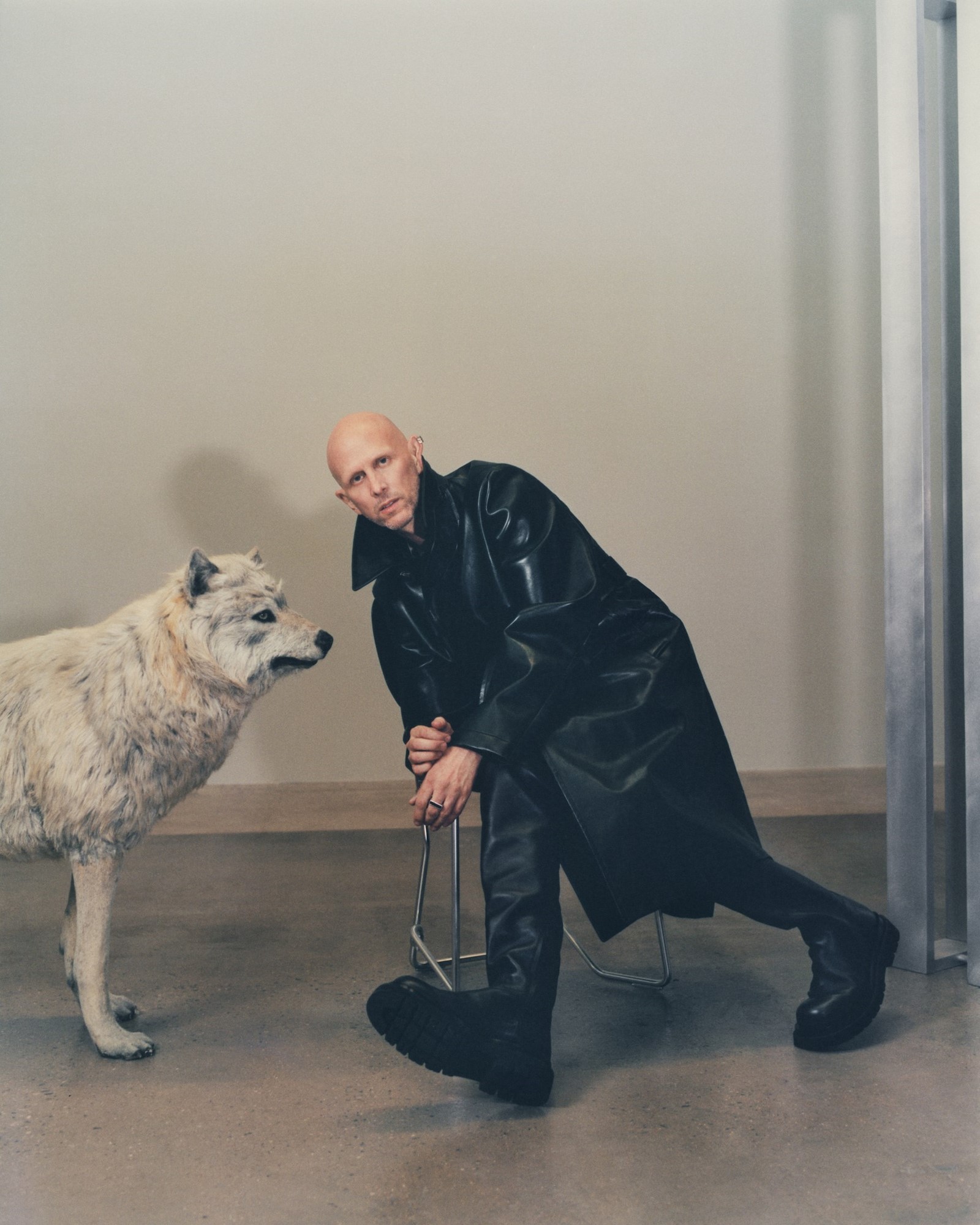One of the most recognisable names in dance, Wayne McGregor first emerged onto the scene in the early 1990s with Company Wayne McGregor. A prolific talent, he spent the 1990s creating dance works for institutions around the world, even finding the time to also work closely with the National Theatre and the Royal Court where he worked on the premiere production of Sarah Kane’s Cleansed.
In 2006, McGregor was made resident choreographer of the Royal Ballet, where he has produced some of his most legendary and canonical works, including Chroma (2006), Infra (2008), Woolf Works (2015), and The Dante Project (2021). He also was an intrinsic element of Abba Voyage, choreographing all four members of Abba for their major avatar-aided return after 40 years.
Since 2021, McGregor (who guest-edited AnOther’s Document in our Autumn/Winter 2022 issue) has been the director of the Venice Biennale Danza, a role he will stay in until 2024. Now in his third year as director, AnOther challenged Wayne to answer 50 questions about his life, his work, what we can expect from this year’s Venice programme and, of course, working with Abba.

1. Where are you right now? I’m in Venice.
2. How is the weather? The weather is almost 40 degree so it’s sweltering. From the first thing in the morning, it’s so hot.
3. How has your day been so far? My day’s been fine so far, it’s been quite an easy day. I think it’s the calm before the storm.
4. This is your third year as director of the Venice Biennale Danza. How have you found the role? It’s been fun. I’m used to curating my own work and commissioning work and working with artists, so that’s a natural part of it but not in such a formalised way. I just had to choose my favourite things and the artists that I love – it’s a dream gig from that point of view.
5. What can we look forward to in this year’s programme? A lot of individual voices speaking their truth. Energetic, thought-provoking, quite provocative work. All of those artists have an amazing passion and integrity, it’s a pretty diverse group.
6. Do you think dance is in a good place right now? I think creatively dance is really thriving. But with the combination of Brexit and funding cuts and risk-averse institutions, I think it’s really sucking the air out of the potential future of dance – that’s a worry. The arts need investment!
7. Do you feel European audiences have a better appreciation for dance than British ones? I don’t think there’s such a thing as an audience. It’s so different wherever you go. Work resonates where it resonates.
8. You have been resident choreographer of the Royal Ballet since 2006. Do you think dance has changed since you started? Definitely. I think it’s more collaborative, it’s more diverse. The process is way more democratic. We’re making progress but I think we have a long way to go.
9. Do you feel there is still a split in appreciation between contemporary and classical? There are always going to be ballet snobs with certain kinds of expertise and expectation. My experience of audiences is that they just want a kind of event. It doesn’t really matter what it is as long as they’re provoked and engaged and there’s human connection and empathy.
10. Is there one classical ballet that you wish you could disappear from the canon forever? I don’t believe in cancelling historical work generally. I think it’s really important that we face our past and the biases and decisions we made at the time and learn from them.
What does a book need to have in order for you to believe it would successfully translate into dance? “I need to feel it in all my senses, not just in my head” – Wayne McGregor
11. Is there one dancer from the past that you wish you could have worked with? The Nicholas Brothers. Watch them in Stormy Weather. They’re amazing.
12. How does a piece for the Royal Ballet differ from something that you create for company Wayne McGregor? I think it’s differently trained dancers, different framing and a completely different process. But at the end of the day you’re just working with people and their imaginations, so I don’t find it all that much different when I’m actually in the room with them.
13. What comes first when creating a new piece? It’s usually the concept because the concept starts years in advance of me being in the studio choreographing it.
14. Do you prefer to choreograph to already existing music or specially commissioned pieces? They both have their challenges and their benefits. Sometimes when you’re working with music that exists, you know the music, so you have a target and you can work with it really clearly. Sometimes you’re working with composers who deliver very late which makes you late. But when they do deliver it’s kind of amazing and thrilling and you get this adrenaline rush.
15. When did you first discover Max Richter? I went to a Max Richter concert where there was also an amazing artist who recently died called Jóhann Jóhannsson at Union Chapel in the mid-2000s. They were playing both halves of this incredible evening.
16. The works that you have created with Richter have been some of your most acclaimed. Why do you think you make such successful collaborators? We’ve just done a new piece of Margaret Atwood in Canada, the MaddAddam trilogy. I think it’s because it’s quite a free-flowing collaboration. We trust one another but we never know what to expect from one another, there’s always a curveball.
17. What songs have you had on repeat lately? Well, this probably sounds a little bit macabre but Ryuichi Sakamoto, who recently died, generated a funeral playlist. I’ve had that on, partly because I was very curious to see what really inspired him.
18. Are there any musicians that you would love to collaborate with? So many. But you’re going to have to watch this space. I’ve had quite a few great active conversations but some of these amazing musicians take time because it’s quite an exposing thing writing for dance.
19. What does a book need to have in order for you to believe it would successfully translate into dance? First of all, I never know – I have blind faith. I need to feel it in all my senses, not just in my head.
20. You are drawn to novels that many wouldn’t think could be interpreted through movement, such as Orlando and the Divine Comedy. Are you drawn to the challenge of complex works? For me, complexity and simplicity go hand in hand. Even in so-called difficult works you can find an essential core that you can navigate with. When people say this is a difficult dance I think it’s one of those things with dance that you’ve got to unlock the code.

21. Have you read anything recently that you think would make an interesting dance work? Again, I have another couple of really interesting ideas in development but I would love to do a Murakami novel one day.
22. What was it like to be asked to choreograph Abba? The whole thing was pure joy. They are amazing individuals and amazing to work with, we were well looked after.
23. Do you have a favourite Abba song? I think I’m probably going to say The Visitors.
24. Is the technology of Abba Voyage something that you think could be used in the world of dance? Definitely. I think the heart of Abba Voyage isn’t the tech so much, it’s the empathy it generates in the audience. With these, you really believe them. That’s what great theatre is, that suspension of disbelief.
25. Technology plays a large part in a lot of your works. How do you think AI will come to play in dance? It’s there already, it’s making new content, it’s developing action for avatars in the metaverse. We’ve done a project with Google recently building a living archive that basically allows one to create new dance phrases in the style of a certain dancer. I think there’s loads of possibilities and opportunities and, of course, there’s lots of risks, so we have to balance those things out.
26. Do you think the same ethical questions will arise with AI in dance as it has in other areas of the arts? That’s what is interesting about the Abba thing, it’s performers who are still alive – it’s not bringing back Bowie. There’s a really interesting question about who owns your body data. What is your physical IP? How do we decide what to do with it or where it might go?
27. You have collaborated closely with fashion designers for many of your works. How important is fashion in your life? I just love fashion, it fascinates me. I love the speed of creation, the ambition, the massive creativity, the resources, the expression.
28. Is every element of a piece as important as each other? From the set to the outfits to the music? It has to be equal. Of course, things come in and out of focus, but I want all of those art forms to have their own authority. I never understand it when people say, ‘Oh, but we didn’t see the dance,’ because the dance is the whole thing, it’s not just what the bodies do.
29. Do you go to the theatre often? A few times a week.
30. Have there been any recent shows/works that have really impressed you? Last weekend we saw A Strange Loop at the Barbican. I really liked it. Life-affirming, devastating, surprising.
How important is fashion in your life? “I just love fashion, it fascinates me. I love the speed of creation, the ambition, the massive creativity, the resources, the expression” – Wayne McGregor
31. Are there any younger choreographers who you think are going to be the next big thing? I learned this brilliant thing from Carmen Herrera just before she died at 106. She had her first show at Whitney when she was 89 and then she became huge. What she says is that eventually, you find your audience. Who wants to be the next big thing? What you want to do is have a sustained career.
32. What do you think can be done in Britain to help promote and nourish dance? Apart from funding, opening up the visa restrictions that Brexit have imposed in terms of international freedom of moving between places and touring is really important.
33. Ashton or MacMillan? For that question, I’m going to answer: Nijinska. Les Noces of Nijinska is one of my all-time favourites so I’m keeping with that one.
34. Balanchine or Robbins? Robbins! I wrote my dissertation at uni on Robbins. Even if you look at the classical ballet work but in something like The King and I, that story ballet in the middle is insanely brilliant.
35. Who is your dance icon? It’s either Merce Cunningham or Trisha Brown.
36. Madonna or Kylie? I’m gonna say … Jlin.
37. What are your favourite things to do with your free time in Venice? Eat ice cream, pretty much.
38. Favourite place to eat in London? We really like The Shepherdess near Old Street.
39. Favourite way to relax? Shiatsu.
40. What are you reading right now? I’ve just started No Longer Human by Osamu Dazai. It’s a book about alienation and humanity. He’s an amazing writer.

41. Do you watch much TV? I love to stream stuff when travelling. I love trash TV like The Real Housewives.
42. Who is your favourite designer to wear? Rick Owens.
43. Do you have any work of yours that you would consider your favourite? It’s always the one I’m working on. I tend not to like the old ones. I just look at them and worry that they should be better than that, I’m very critical of them.
44. Do you approach works differently depending on whether they are passion projects or commissioned works? I try as much as possible to be all in or all out. I really believe if you’re doing it and spending your time on it you need to do it 110 per cent, so I’m very all in or all out.
45. What do you think is the greatest misconception about dance? That dance can’t be intellectual or have an intellectual frame. It always irks me when people are accepting an award or something and go, ‘We’re dancers, we can’t speak,’ perpetuating this idea that dancers don’t have any intellectual rigour.
46. If you hadn’t gone into dance, what job would you have now? I always wanted to be a barrister.
47. Do you have one distinct memory that you see as the beginning of your love of dance? It’s probably one that’s quite well-known but it is a true one ... it was seeing Saturday Night Fever for the first time.
48. You were the movement director for the Fantastic Beasts films. Could you tell us what exactly a movement director does and how it differs from choreography? Choreographers make dances and movement directors work on all the physical aspects of a role to help actors express their character. I’ve just been working with Saoirse Ronan again on a new movie called The Outrun where she’s an alcoholic and what the stages of that process are physically. It’s about looking at movement in all its forms and helping a director find a really good physical expression for the actor who obviously has the vocal expression as well, and matching them.
49. Is there any question you wish you had been asked? I’ve been seeing this in the news quite a bit but this whole thing about, do you believe in aliens?
50. Well, Wayne, do you believe in aliens? With NASA finding all these alien crafts, I don’t know. I want to believe ...
